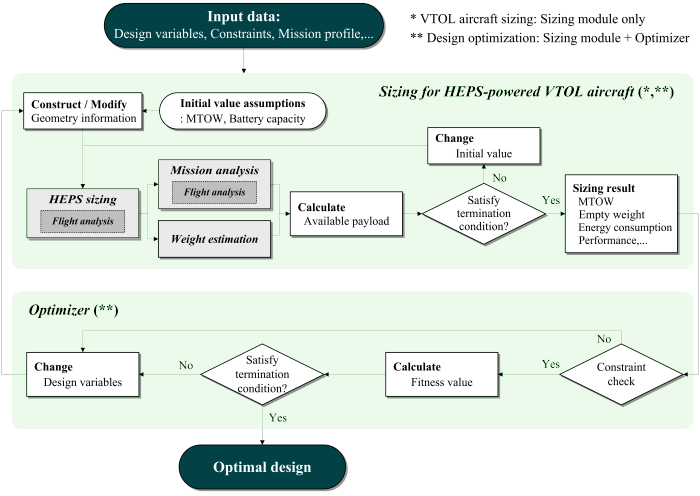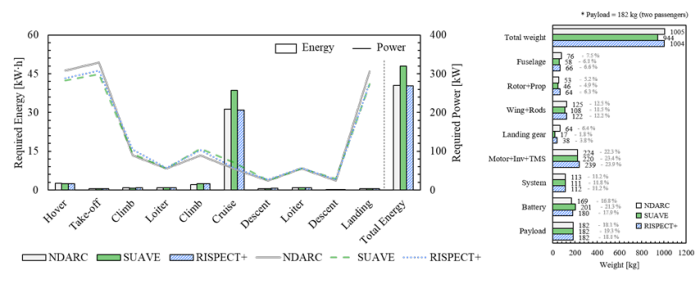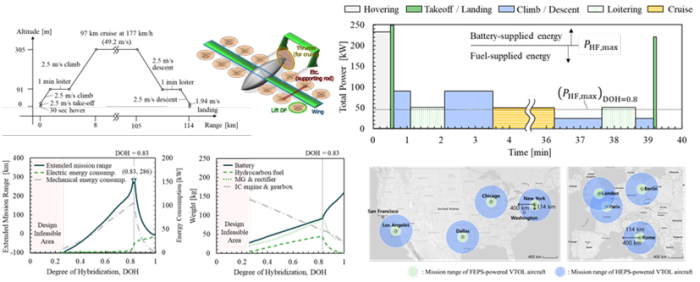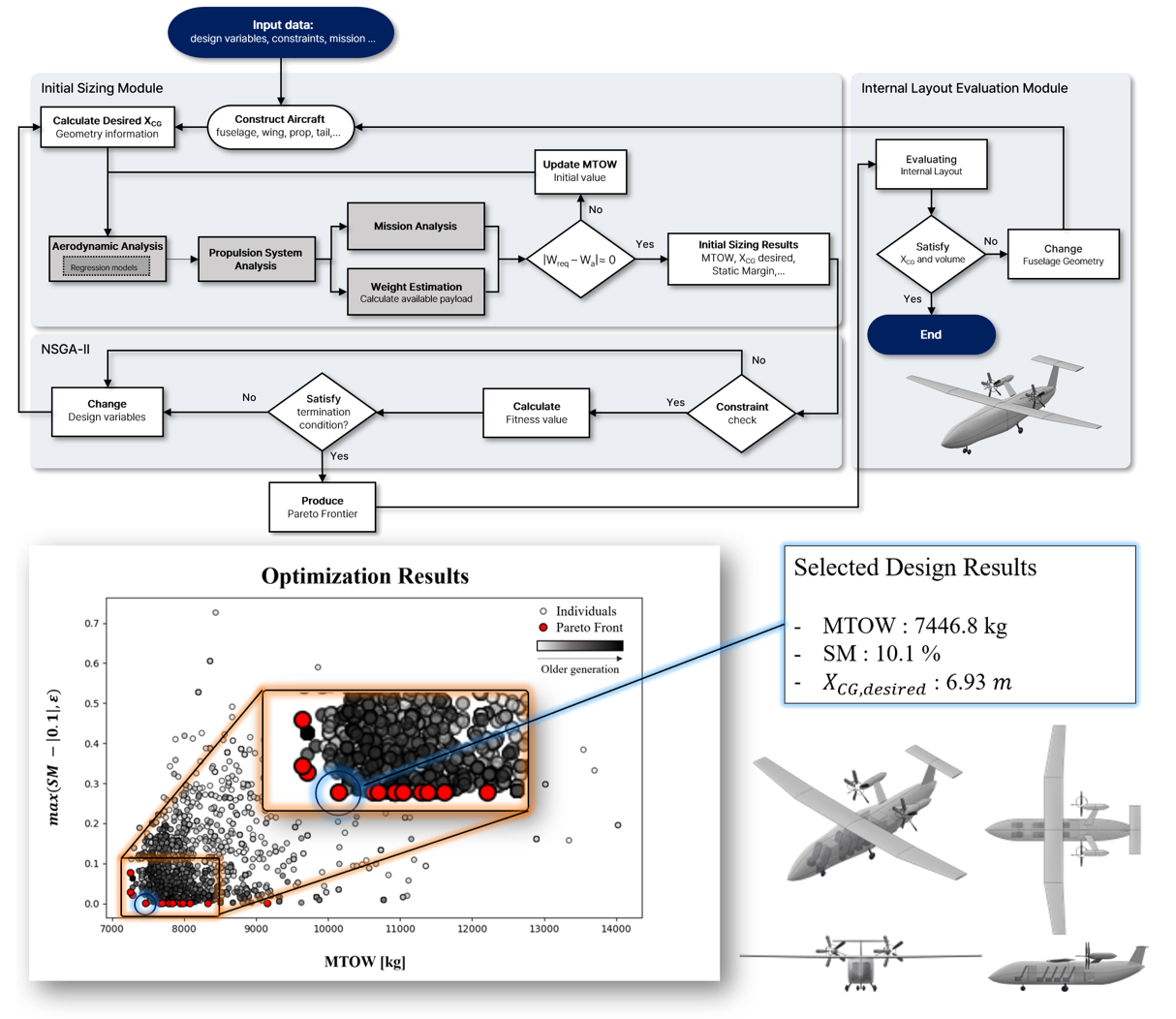Aircraft Design Tools
Rotorcraft Design Framework (RISPECT+ & RISPECT III)
Modern rotorcraft design presents unique technological challenges that require thorough early-stage performance analysis and system design. Both traditional helicopters and emerging eVTOL aircraft build upon established rotorcraft principles while incorporating innovative propulsion technologies—such as electrified, hybrid-electric, fuel-cell, and conventional systems—to improve performance and safety.
To address these complexities, RISPECT+ was developed as a tool for initial performance estimation and sizing. It supports a wide range of configurations, including wingless, lift+cruise, and vectored thrust concepts, as well as various propulsion architectures. This flexibility enables engineers to assess and compare design options early in development, fostering more informed and reliable decisions.
Building on this foundation, RISPECT III has been developed to further enhance modeling capability by incorporating generalized object-oriented modeling techniques based on the AMADEVS architecture. This allows engineers to define and analyze diverse rotorcraft configurations within a unified and extensible environment.
Together, RISPECT+ and RISPECT III provide a scalable framework that supports rapid design iteration, multidisciplinary integration, and future rotorcraft development across the Advanced Air Mobility (AAM) market—equipping engineers with versatile tools to innovate the next generation of rotorcraft.



Fixed-Wing Aircraft Design Framework (ASPECT)
As sustainability becomes a defining objective in modern aviation, the need to assess environmental impact—particularly aircraft emissions—has become increasingly critical in the early stages of design. Fixed-wing aircraft must now be developed not only for performance and safety but also for their long-term climate effects and regulatory compliance. This shift demands a next-generation design framework capable of integrating environmental metrics into traditional performance analysis.
ASPECT (Aircraft Sizing & Performance Estimation Code & Toolkit) has been developed to meet this need, offering a flexible framework for the system design of fixed-wing aircraft, including emerging electric and hybrid-electric types. Developed within the generalized object-oriented modeling environment (AMADEVS), ASPECT inherits a modular and extensible architecture that enables system-level integration across disciplines. ASPECT allows engineers to evaluate aerodynamic, structural, and propulsion performance alongside fuel burn and emission estimates across varying mission profiles. Its architecture supports rapid system evaluation and trade studies, enabling seamless comparison of configurations under diverse propulsion technologies and environmental constraints.
As the industry moves toward greener aviation, ASPECT provides the analytical foundation needed to design aircraft that balance technical feasibility with climate responsibility—supporting innovation at the intersection of performance and sustainability.

Advanced Modeling, Analysis & Design Environment for Vehicle Systems (AMADEVS)
As the demand for new aircraft continues to grow, the complexity and design freedom in modern aerospace systems are also increasing. This trend necessitates a modeling and design environment that evolves accordingly—capable of handling a wide range of aircraft configurations, propulsion architectures, and mission requirements from the early design stages. A generalized, flexible modeling framework is essential for evaluating diverse concepts efficiently and consistently.
AMADEVS (Advanced Modeling, Analysis & Design Environment for Vehicle Systems) has been developed to meet this need. Built on a generalized, object-oriented architecture, AMADEVS enables system modeling and analysis of various vehicle types, including both fixed-wing and rotorcraft platforms, regardless of configuration. It supports modular definition of components, flexible assembly of components, and easy integration of multi-fidelity models across disciplines such as aerodynamics, propulsion, mass properties, and mission performance.
Rather than being tied to a specific aircraft concept, AMADEVS serves as a unified environment that empowers engineers to explore, analyze, and design a wide spectrum of future air vehicle systems. It provides the foundational capability to address the increasing design complexity of sustainable and innovative aircraft architectures.


Reference
[1] Lee, D., Kang, S., and Yee, K., “A Comparison Study of Rotorcraft with Hybrid Electric Propulsion System,” Proceedings of the 45th European Rotorcraft Forum, Warsaw, Poland, Sep. 17–20, 2018.
[2] Kim, J., Park, S., Jeong, S., Joo, S., Chatelain, B., Ryu, J., and Yee, K., “A Generalized Modeling Architecture for Aircraft Multidisciplinary Analysis and Design”, Proceedings of the KSAS Spring Conference, 2025 .
[3] Chatelain, B. Kim, J., “ Development of A Fixed-Wing Aircraft Initial Design Framework Using Object-Oriented Modeling Techniques”, Proceedings of the KSAS Spring Conference, 2025.
[4] Kim, J., Park, S., Kim, H., and Yee, K., “Development of an Object-Oriented Aircraft Conceptual Design Framework,” Proceedings of the KSAS Conference, 2024, pp. 412-413. .